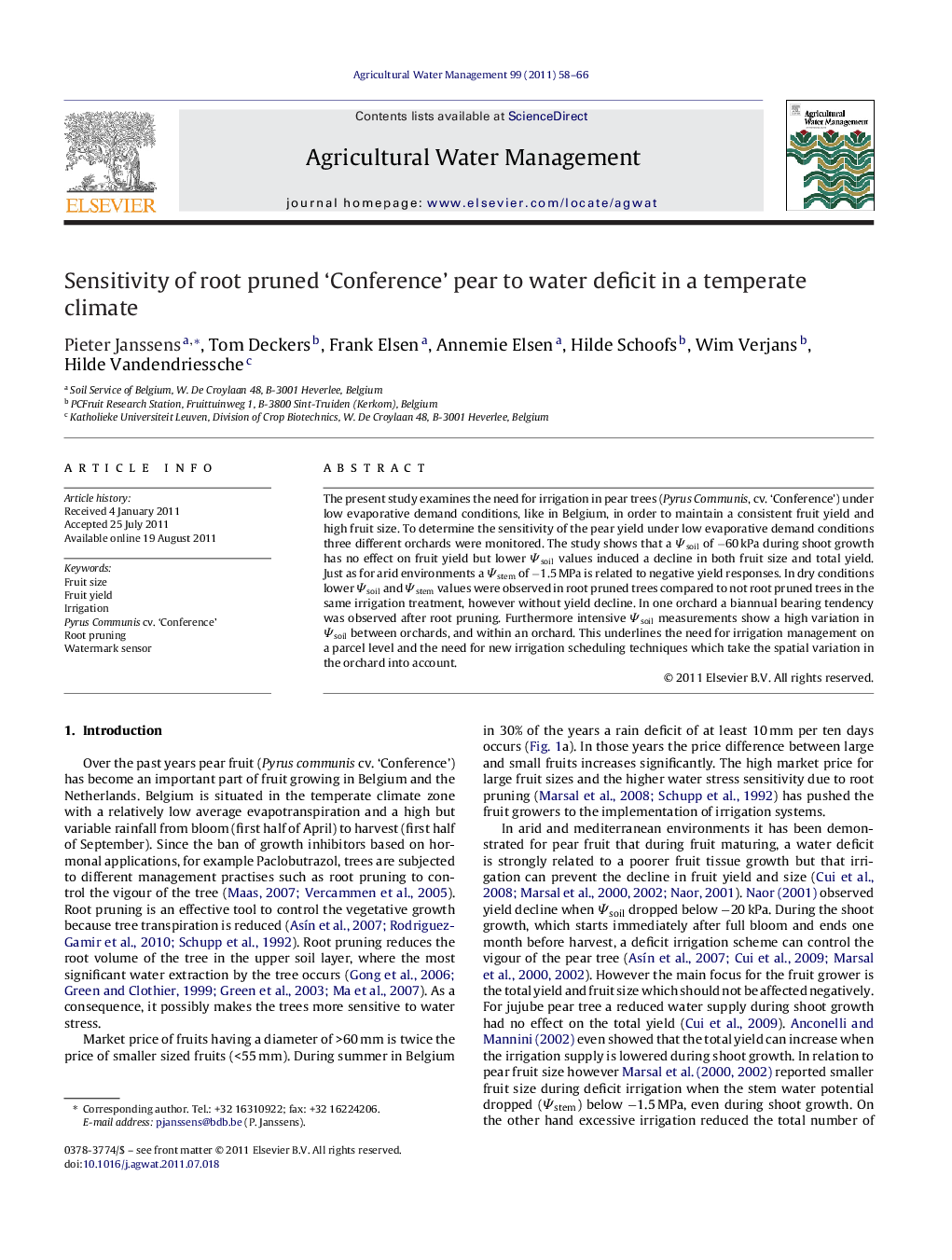| Article ID | Journal | Published Year | Pages | File Type |
|---|---|---|---|---|
| 4479283 | Agricultural Water Management | 2011 | 9 Pages |
The present study examines the need for irrigation in pear trees (Pyrus Communis, cv. ‘Conference’) under low evaporative demand conditions, like in Belgium, in order to maintain a consistent fruit yield and high fruit size. To determine the sensitivity of the pear yield under low evaporative demand conditions three different orchards were monitored. The study shows that a Ψsoil of −60 kPa during shoot growth has no effect on fruit yield but lower Ψsoil values induced a decline in both fruit size and total yield. Just as for arid environments a Ψstem of −1.5 MPa is related to negative yield responses. In dry conditions lower Ψsoil and Ψstem values were observed in root pruned trees compared to not root pruned trees in the same irrigation treatment, however without yield decline. In one orchard a biannual bearing tendency was observed after root pruning. Furthermore intensive Ψsoil measurements show a high variation in Ψsoil between orchards, and within an orchard. This underlines the need for irrigation management on a parcel level and the need for new irrigation scheduling techniques which take the spatial variation in the orchard into account.
► A water deficit on root pruned pear tree in a temperate climate is studied. ► Fruit size decline was observed when Ψsoil decreased below −100 KPa. ► A Ψsoil of −60 KPa had no effect on fruit size and Ψstem remained above −1.5 MPa. ► Lower Ψsoil and Ψstem values were registered after root pruning without yield decline.
